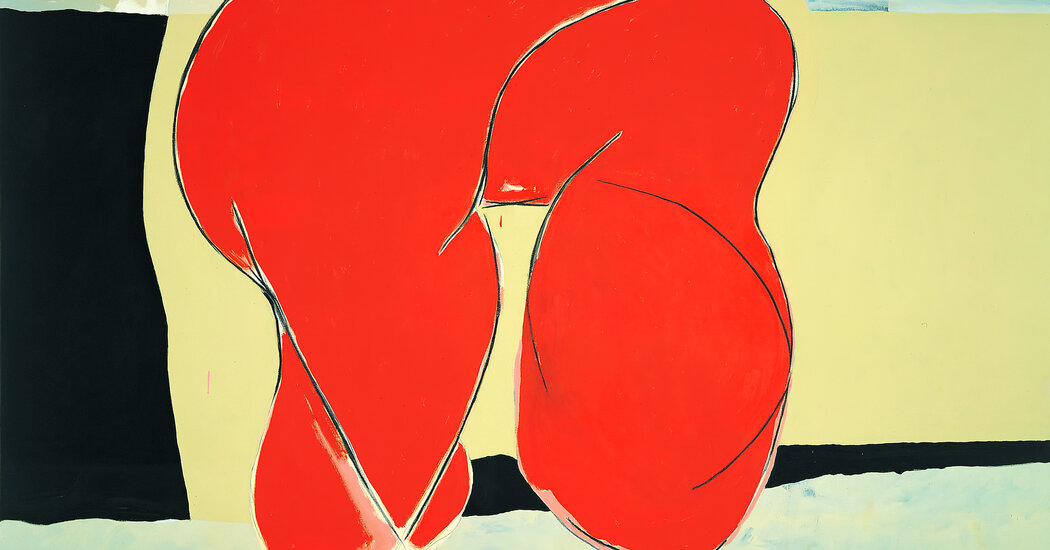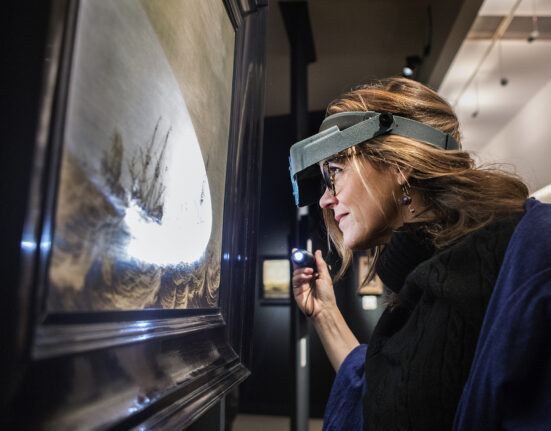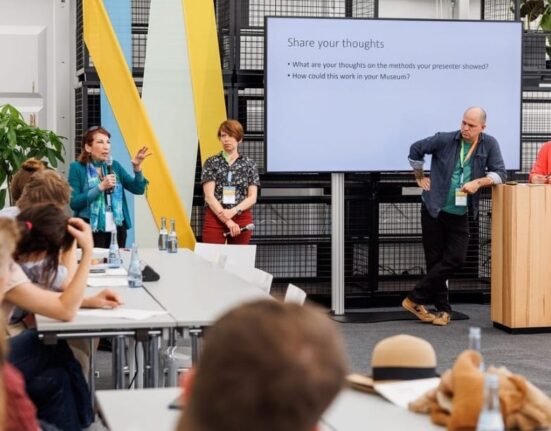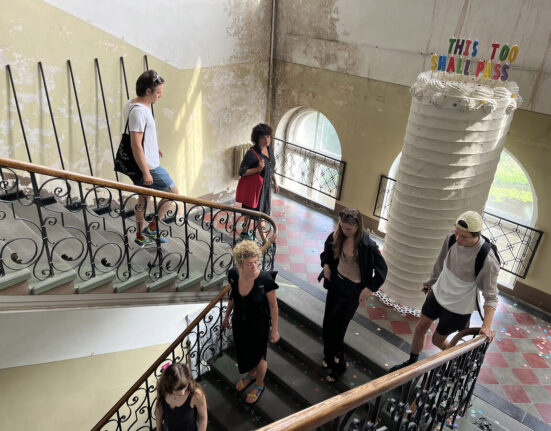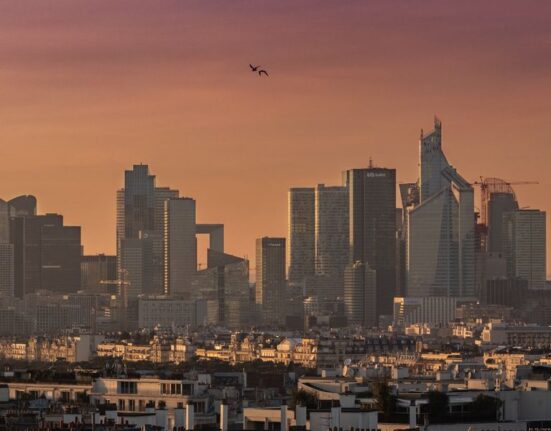The artist Robert Motherwell was a bridge between continents: at once a spokesman for the New York School and a conduit for the theories of European modernists. And yet, there has not been a retrospective of his work in Europe since 1998. In Austria, the last major Motherwell exhibit took place in the 1970s.
That will change this month as the Kunstforum in Vienna hosts “Robert Motherwell — Pure Painting.” The retrospective, which runs Oct. 12 to Jan. 14, was first unveiled at the Modern Art Museum of Fort Worth, Texas, earlier this year (it closed on Sept. 17).
The show — as the title indicates — focuses exclusively on his paintings, featuring loans from private collections and museums from across the United States and Europe. “Pure Painting” spans half a century, beginning with figurative abstractions of the 1940s and extending into representative works of his last years. The retrospective unfolds chronologically, allowing for an examination of how his artistry evolved.
While an easy sell in Fort Worth, Motherwell is not as obvious a choice for the Austrian capital. Evelyn Benesch, the Kunstforum’s deputy director and the exhibit’s co-curator, said that the museum was keen to present not just “prominent and popular” artists, but also those which the museum’s administration “simply finds really good.” She pointed to the power of experiencing Motherwell’s paintings “in their monumentality, command of space, structured surfaces and color scheme.”
The leading curator of the exhibition, Susan Davidson, who presided over an exhibition of early collages by Motherwell at the Guggenheim Museum in New York a decade ago, expressed a similar sentiment: “I hope the exhibition brings out the complexity of his surfaces. This was so rewarding to see in Fort Worth. The brushwork and use of different tones is really striking.”
The artist would often modify his paintings in what Ms. Davidson calls an act of “organic revisionism.” The work “The Voyage: Ten Years After” (1960-1) was subject to no less than six months of further work after it had been exhibited. Ms. Davidson writes in the exhibition catalog that his “retrospective self-analysis was central to his ongoing practice. Motherwell harbored an abiding need to take stock, to reimagine, and especially to refine his painting — a process that was almost a precondition of his artmaking.”
He was the leading spokesman of what he termed the New York School — the postwar movement that asserted the autonomy and eventually preeminence of American art, with New York as its cultural center. Having spent time in Paris in 1938-39, Motherwell was able to easily cultivate relationships with European-born avant-garde artists such as Marcel Duchamp and Piet Mondrian. In 1942-44, he worked with émigrés from Max Ernst to André Breton while serving as American editor of the Surrealist journal “VVV.”
As the New York School formed — including artists such as Jackson Pollock and William Baziotes — Motherwell tried to counter their negative sentiments toward European culture. He drew a line from the abstraction in modern art to the tradition of French Symbolist poetry, speaking of “an art that refuses to spell everything out.”
The current exhibit allows for an overview of Motherwell’s painting that he was not able to experience in his lifetime. He died months before a major retrospective, in 1991.
He had, however, attended the opening of a show at the Museum of the Twentieth Century in Vienna in 1976-7 that marked an important moment in the reception of his work in Europe.
The Vienna edition of “Pure Painting” will present his most important series — the “Elegies to the Spanish Republic” (1948-90) and “Opens” (1967-c. 1976) — in respective rooms rather than across time, as in Fort Worth. The show further includes the 1988 painting “The Feminine II,” which had gone missing until the curators tracked it down with a private collector in Singapore.
Ms. Davidson noted the importance of also taking into account his earlier, figurative work, mentioning as examples “A Sculpture’s Picture, with Blue” (1958) and “Two Figures with Cerulean Blue Stripe” (1960).
“All the artists of his generation within that New York School began as figurative painters and moved toward abstraction,” she said. “So that’s a very important aspect.”
The retrospective will also feature the 1975 painting “The Spanish Death” — part of the Spanish Elegies series — which was in storage at Vienna’s Mumok Museum of Modern Art. Ms. Benesch said she was delighted to present “this very important painting” here “for the first time in an international context.”
The Elegies’ juxtaposition of black ovals and rectangles against a white surface become a signature motif of Motherwell’s work. The monumental paintings are also political statements, lamenting the death of the Spanish Republic after the Spanish Civil War of 1936-39.
Ms. Benesch draws a line back to history paintings of the 19th century, mentioning as examples “a Delacroix or ‘Le Radeau de La Méduse’ by Théodore Géricault — which hang in the Grande Galerie of the Louvre — or giant tapestries from the Renaissance. During Impressionism everything is small, and then painters are creating on a large scale again.”
Motherwell’s “The New England Elegy,” a mural painted for an interior wall of the John F. Kennedy Federal Building in Boston in 1966, was interpreted as an illustration of the president’s assassination and led to protests. The late president’s brother, Senator Edward M. Kennedy, made a public statement that the painting “is not meant to represent any specific event.”
Ms. Davidson said that Motherwell’s experiences in Mexico in the ’40s with the Chilean painter Roberto Matta, and his eventual marriage to the actress Maria Emilia Ferreira y Moyers — whose family directly suffered from the Mexican Revolution — left him “with firsthand accounts that weighed on him. And he used his painting as an expression of human rights and human suffering.”
She also says that he was deeply affected by World War II. “It wasn’t fought on our land, but it was very present. There was rationing. It was a very restrictive time. If we fast-forward to what is going on today and the reckonings that are happening around the world — whether it be in wars or how people are held accountable for their actions or past actions — I think that Motherwell is very relevant in that regard.”

